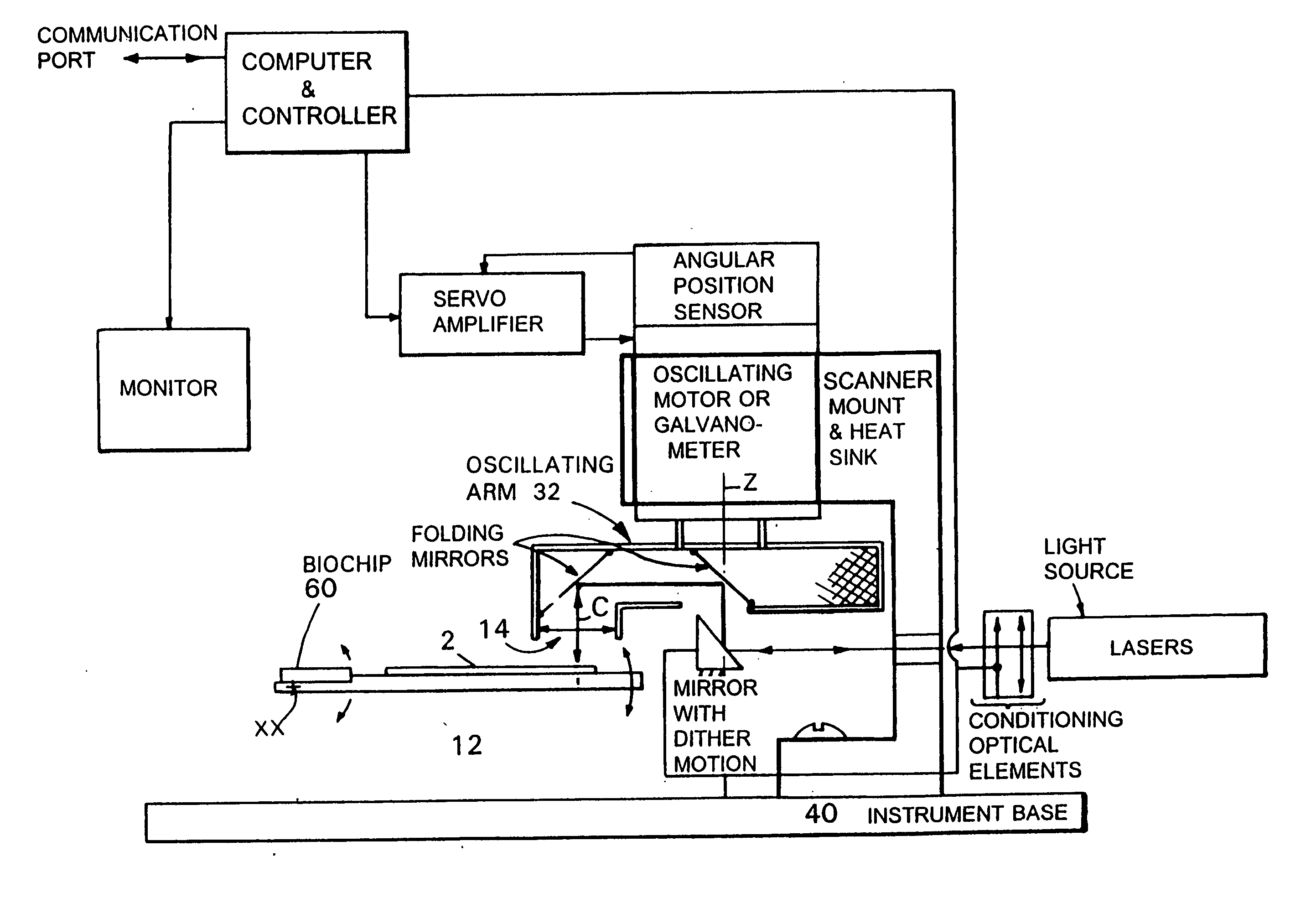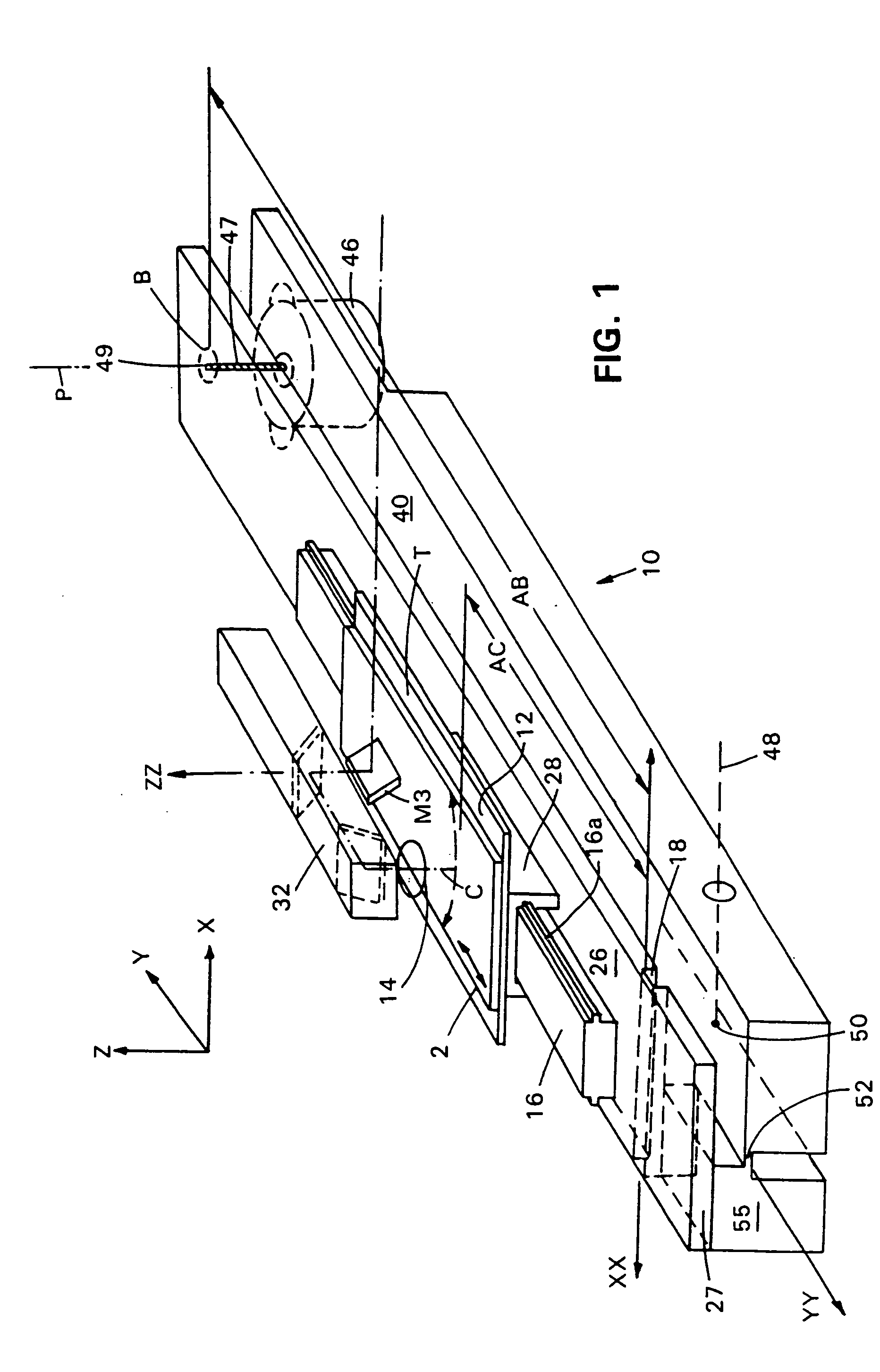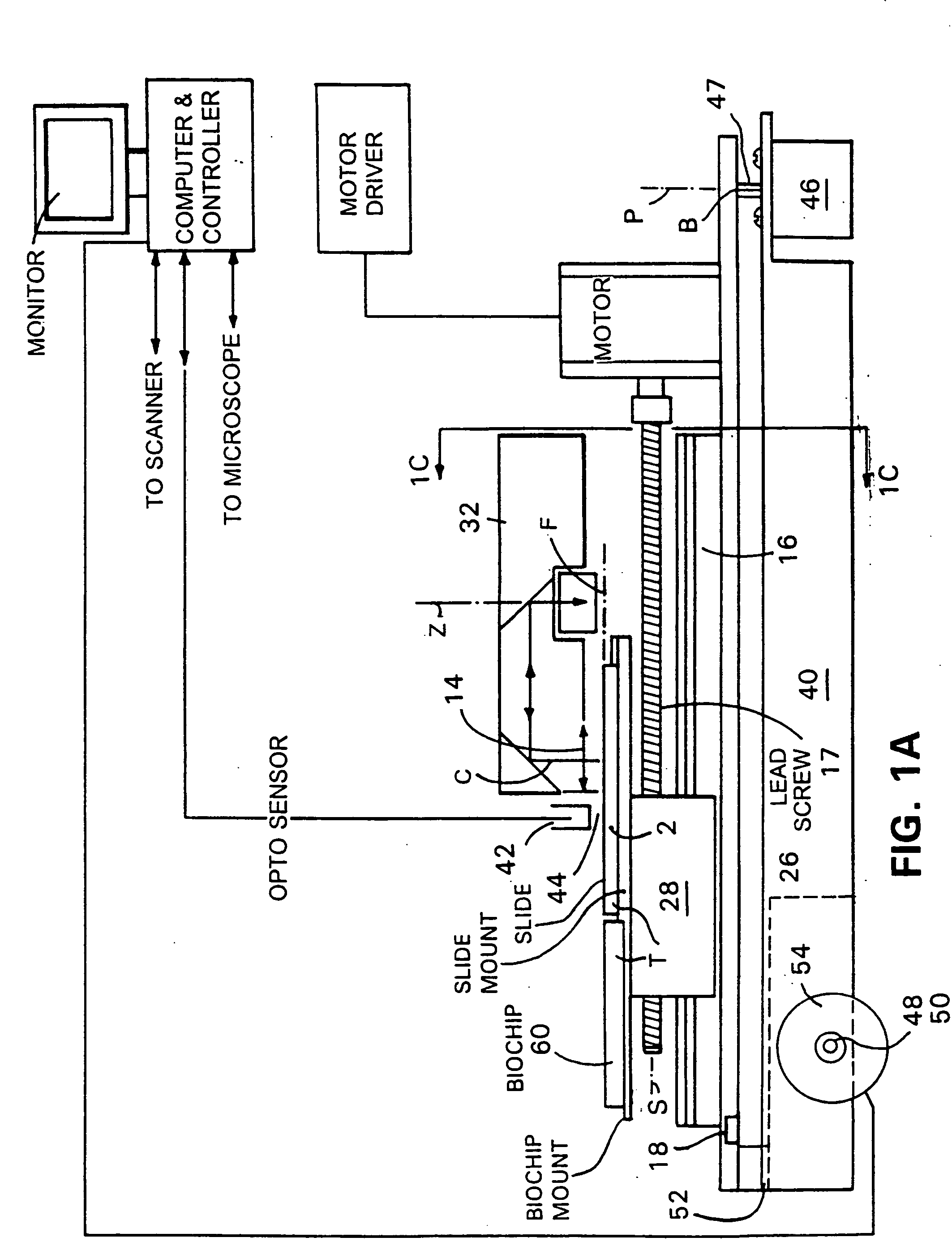Focusing of microscopes and reading of microarrays
a microarray and microscope technology, applied in the field of microscope focusing and microarray reading, can solve the problems of unattended operation of such instruments, high cost, economic and operational drawbacks, etc., and achieve the effect of low cos
- Summary
- Abstract
- Description
- Claims
- Application Information
AI Technical Summary
Benefits of technology
Problems solved by technology
Method used
Image
Examples
Embodiment Construction
[0071] The invention will be described as it applies to the presently preferred embodiment, which includes, in combination, a rotary oscillating flying micro-objective scanning microscope such as shown in FIG. 2 and described in more detail in the patent applications related to scanning cited above, which are hereby incorporated by reference.
[0072] Referring to FIGS. 2 and 2A, it is sufficient to note that objective-carrying arm 32 rotates in rotary oscillating fashion through an arc of e.g. 60 degrees about rotational axis ZZ that is normal to the nominal plane of the microscope slide 2 or biochip 60. The arm carries a low mass micro-objective lens 14, e.g. a micro lens of weight less than about 2 grams, sized to detect a single picture element at any data collection point. The optical axis C at a radial distance from the axis of rotation ZZ, produces a range of excursion E sufficient to scan the width of the microscope slide 2 or biochip 60, provision for both of which are provid...
PUM
| Property | Measurement | Unit |
|---|---|---|
| diameters | aaaaa | aaaaa |
| thick | aaaaa | aaaaa |
| depth of field | aaaaa | aaaaa |
Abstract
Description
Claims
Application Information
 Login to View More
Login to View More - R&D
- Intellectual Property
- Life Sciences
- Materials
- Tech Scout
- Unparalleled Data Quality
- Higher Quality Content
- 60% Fewer Hallucinations
Browse by: Latest US Patents, China's latest patents, Technical Efficacy Thesaurus, Application Domain, Technology Topic, Popular Technical Reports.
© 2025 PatSnap. All rights reserved.Legal|Privacy policy|Modern Slavery Act Transparency Statement|Sitemap|About US| Contact US: help@patsnap.com



